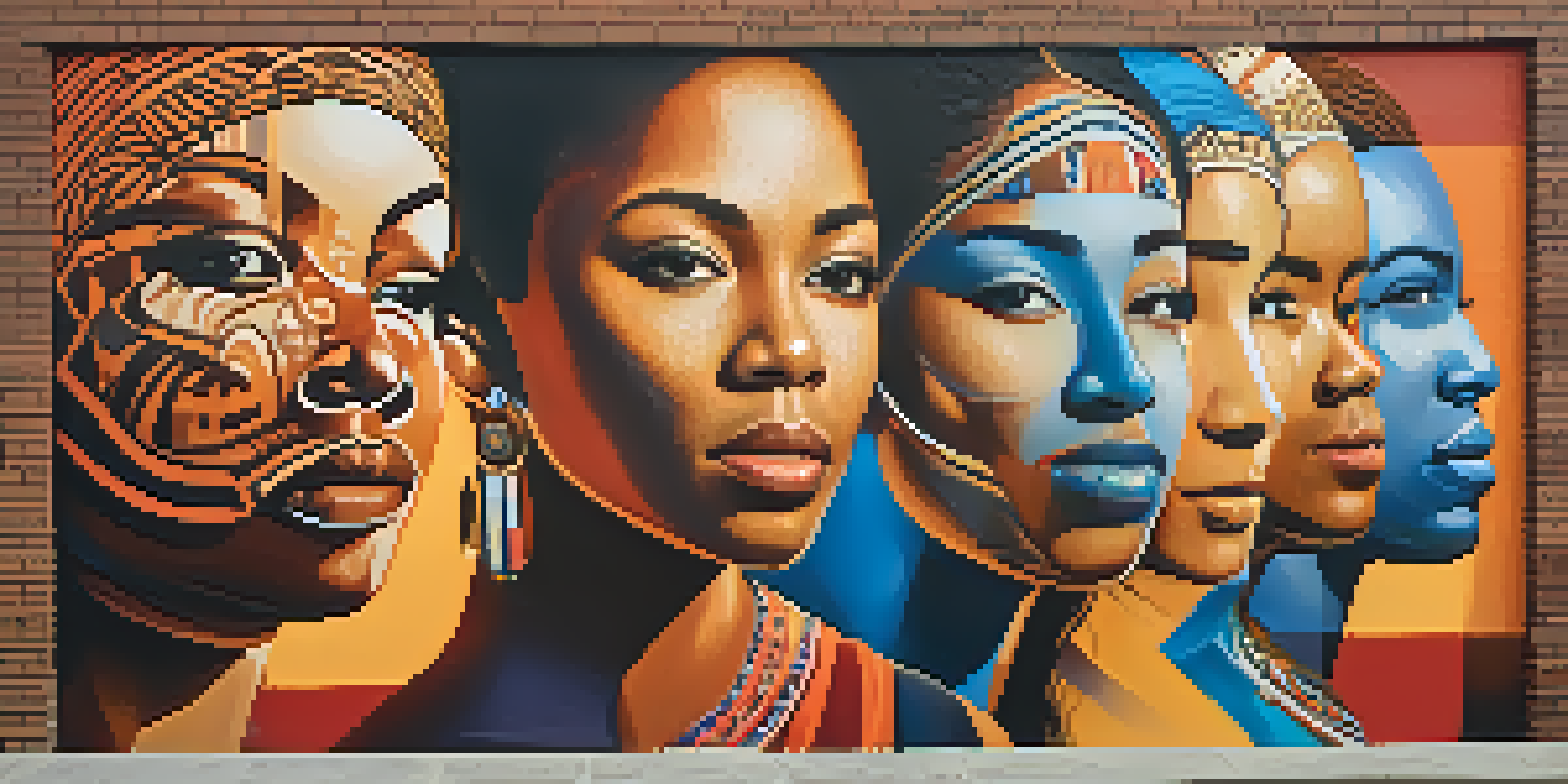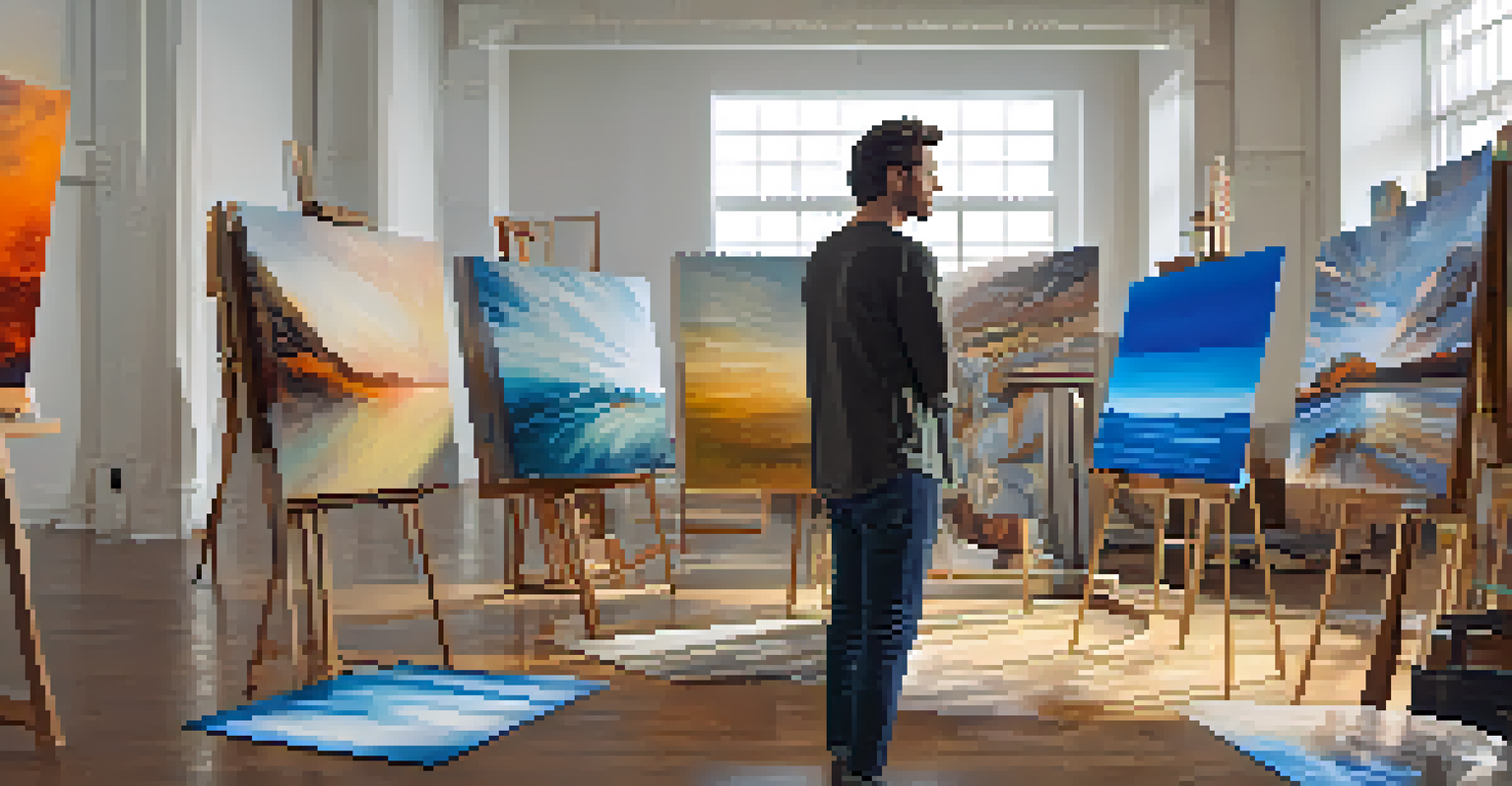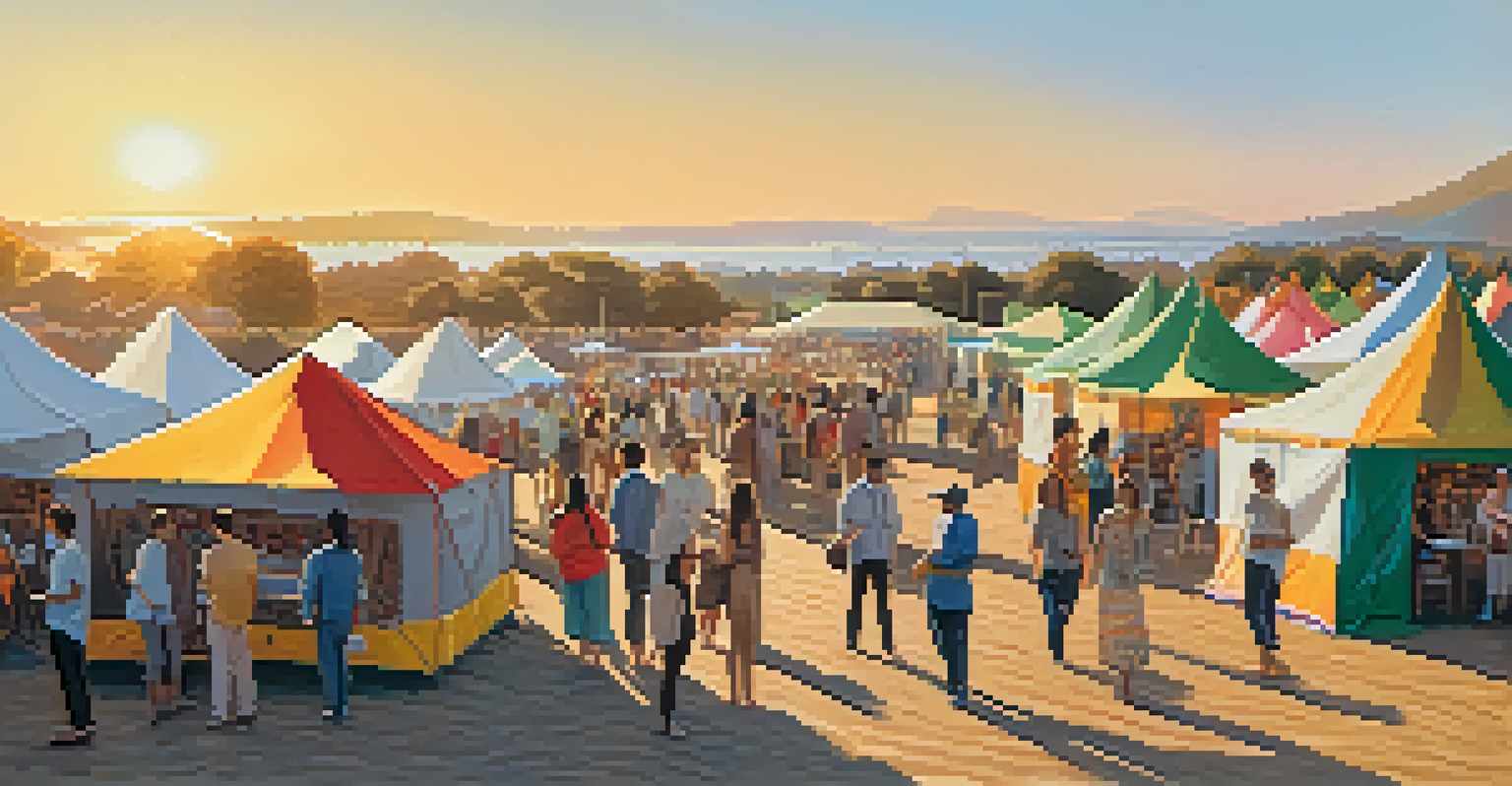Art and Identity: Navigating Cultural Narratives in the Future

Understanding the Role of Art in Identity Formation
Art has always been a mirror reflecting the identity of individuals and communities. It captures the essence of who we are, weaving together our histories, values, and beliefs. Through various forms, whether visual, musical, or literary, art shapes our understanding of self and our place in the world.
Art is the most beautiful of all lies.
As we navigate an increasingly globalized society, the role of art in identity formation becomes even more crucial. It helps individuals connect with their roots while also allowing for the exploration of new cultural narratives. This duality fosters a richer, more nuanced understanding of identity.
Art also serves as a platform for underrepresented voices, empowering them to share their unique stories. By highlighting diverse perspectives, art can challenge dominant narratives and encourage a more inclusive dialogue about identity.
Cultural Narratives: The Stories We Tell Ourselves
Cultural narratives are the stories that define who we are as a society. They shape our values, beliefs, and behaviors, influencing how we interact with one another. Art plays a vital role in crafting and communicating these narratives, making them accessible to a wider audience.

Through storytelling, artists can capture the essence of cultural experiences, preserving history and tradition. This storytelling can take many forms, from traditional folk tales to contemporary visual art, each contributing to the tapestry of cultural identity.
Art Shapes Identity and Culture
Art serves as a mirror for individuals and communities, reflecting their histories, values, and beliefs while facilitating a deeper understanding of identity.
As we look to the future, it’s essential to recognize how cultural narratives evolve. They are not static; instead, they adapt and transform, reflecting the changing dynamics of society. This adaptability ensures that art remains relevant in portraying the complexities of identity.
The Intersection of Technology and Art in Identity Exploration
In our fast-paced digital age, technology has revolutionized how we create and consume art. Artists now have access to a plethora of tools that allow them to explore identity in innovative ways. From virtual reality experiences to social media platforms, technology opens up new avenues for artistic expression.
The role of art is to make a world that can be understood beyond the boundaries of languages and cultures.
This intersection of technology and art also facilitates global conversations about identity. Artists can share their work instantaneously, engaging with diverse audiences and fostering cross-cultural dialogues. As a result, we can see how different identities intersect and influence one another in real-time.
However, it's essential to approach this technological shift thoughtfully. While technology can enhance artistic expression, it can also dilute cultural narratives if not handled respectfully. Balancing innovation with authenticity will be crucial as we navigate the future of art and identity.
Art as a Tool for Social Change and Identity Affirmation
Art has long been a catalyst for social change, challenging existing norms and advocating for marginalized communities. It serves as a powerful medium for expressing resistance and resilience, allowing individuals to affirm their identities in the face of adversity. Through powerful imagery, music, and literature, artists can ignite movements and inspire action.
For instance, street art has become a prominent form of activism, using public spaces to convey messages of empowerment and social justice. These visual narratives not only beautify urban landscapes but also provoke thought and dialogue about identity and community issues.
Technology Enhances Artistic Expression
The intersection of technology and art allows for innovative exploration of identity, enabling global conversations and diverse artistic collaborations.
As we move forward, the role of art in social movements will likely expand. By harnessing the power of creativity, artists can continue to push for change while fostering a sense of belonging and identity among diverse groups.
The Globalization of Art and Its Impact on Identity
Globalization has transformed the art world, enabling a cross-pollination of ideas and styles. Artists from different backgrounds can now collaborate, creating hybrid forms of art that reflect multiple cultural influences. This blending of traditions enriches the artistic landscape and offers new ways to explore identity.
However, this globalization also raises questions about cultural appropriation versus appreciation. It's vital to navigate these waters carefully, ensuring that artists respect the sources of inspiration while celebrating diversity. A thoughtful approach can lead to meaningful exchanges that honor the integrity of different identities.
As we look ahead, the challenge will be to foster a global art scene that is inclusive and equitable. By prioritizing respect and understanding, we can create a vibrant tapestry of artistic expression that honors all identities.
The Future of Art: Embracing Diversity and Inclusion
Looking to the future, the art world must prioritize diversity and inclusion to truly reflect the tapestry of human experience. This means amplifying underrepresented voices and creating platforms where diverse perspectives can thrive. Inclusion not only enriches the art community but also fosters a deeper understanding of identity.
Art institutions and organizations have a critical role to play in this transformation. By actively seeking out and supporting diverse artists, they can help dismantle barriers that have historically marginalized certain groups. This commitment to inclusion can lead to a more equitable art landscape.
Diversity Fuels the Future of Art
Prioritizing diversity and inclusion in the art world is essential for authentically representing the richness of human experience and fostering a more equitable landscape.
Ultimately, embracing diversity in art will lead to a more authentic representation of our global society. As artists continue to explore their identities and cultural narratives, they will shape a future that celebrates the richness of human experience.
Conclusion: The Ongoing Journey of Art and Identity
In conclusion, the relationship between art and identity is an ongoing journey that reflects the complexities of our world. As we navigate cultural narratives, it's essential to recognize the power of art in shaping our understanding of self and community. Through creativity, we can explore diverse identities and foster connections that transcend boundaries.
The future holds immense potential for artistic exploration, particularly as technology and globalization continue to shape our experiences. By prioritizing inclusivity and respect, we can ensure that the art we create resonates with a wide range of voices and perspectives.

As we move forward, let us embrace the transformative power of art in our lives. By celebrating the interplay between art and identity, we can create a richer, more vibrant cultural narrative that honors the stories of all individuals.